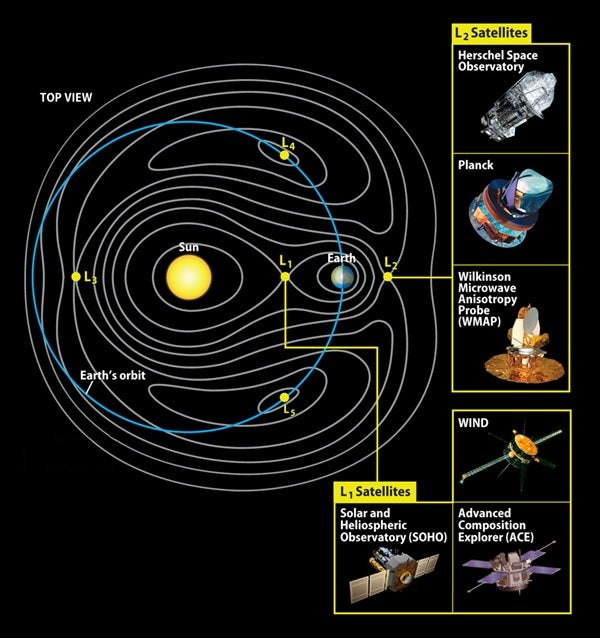Q: How big are the Lagrangian points? I hear of telescopes orbiting at a certain Lagrangian point, but for these crafts to not interfere with one another, aren’t these points more like “Lagrangian areas”?
A: The Lagrangian points are indeed points, infinitesimal in size, where the gravitational forces from a planet and another body (generally the Sun or a moon) exactly balance the centrifugal force. But, as you guessed, surrounding each actual La-grangian point is an extended zone where a spacecraft can conveniently park itself in an orbit that requires little fuel to maintain. When you hear about a spacecraft orbiting at a certain Lagrangian point, it really means the probe is traveling within or near one of these extended, three-dimensional islands of orbits.
The size of these islands varies. Each planet in the solar system has its own Lagrangian points. The islands of stability get bigger farther from the Sun and also for more massive planets. The ones associated with Earth are roughly 500,000 miles (800,000 kilometers) wide. The biggest zones (at least in the solar system) are Neptune’s; they are about 2 billion miles (3.2 billion km) across.
Not just man-made spacecraft park themselves near Lagrangian points. Sometimes asteroids do, too. Jupiter’s L4 and L5 Lagrangian points are full of these “Trojan” asteroids.










